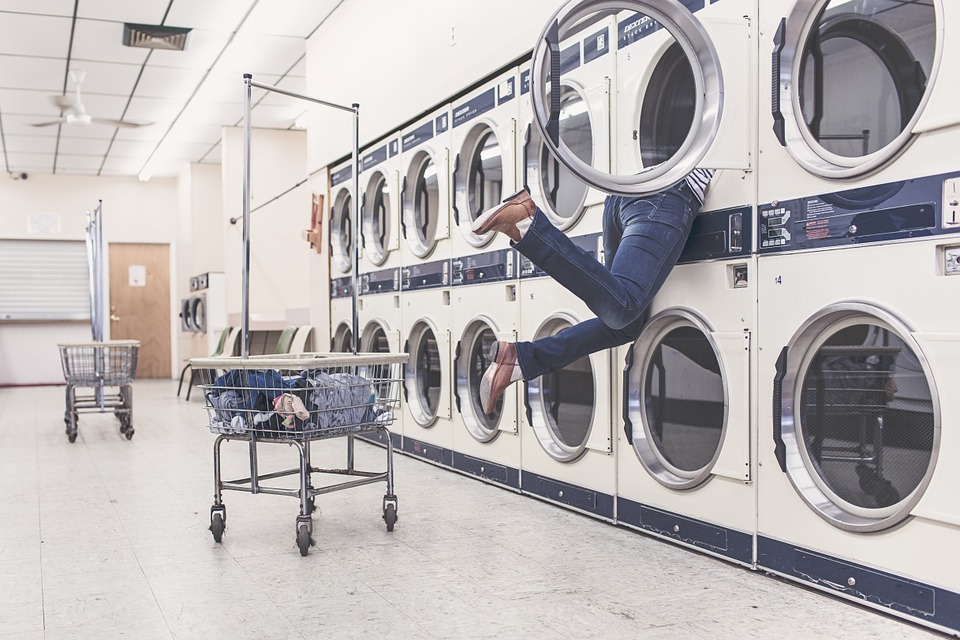Are You Ruining Your Appliances? (Part 2/2)

Continued from part one, available here.
Your washing machine: the one you’re probably abusing
I don’t know if you know this or not, but you are probably chronically overfilling your washing machine. I know I used to do it, and I recently had to buy a new washer because of it. I know firsthand how very tempting it is to stuff the machine as full as you can get it, especially when you have a lot of laundry to do because laundry sucks and you’ve let it get backlogged. But don’t take it out on your poor machine! You should never fill the drum more than two-thirds full as a general rule, but check what your owner’s manual has to say about it to be sure. If there’s a discrepancy between the two, go with what the manual says, as these instructions are specific to your machine.
“Overloaded washers won’t clean clothes properly because there’s no room for the clothes to move or for the detergent and water to circulate; the extra weight of wet clothes can damage the machine,” says Rogers.
Basically, wet laundry is HEAVY, and putting all that extra weight in the machine and then letting the agitator struggle to move it around is a recipe for disaster. You can easily wear out the bearings and drum this way, and those are costly fixes if you aren’t handy yourself. Another laundry sin that you are probably committing? Using too much detergent. I know you’re doing it because you think it will get your clothes cleaner and smelling Tide-fresh, but the actuality is that all that extra washing liquid creates a build-up of clogging, stinky residue. And you most DEFINITELY do not want your washing machine full of stank. On top of that, the residue can also cause components to fail over time. So use the little measuring cup that came with the bottle of detergent, okay?
Your dryer: the fire hazard
Did you know that household dryers are a leading cause of house fires? Terrifying, but true. If you don’t attend to your dryer and maintain it properly, you could be jeopardizing not only your home, but your life and those of your family as well. Gunk like dust, dander, and pet hair can all build up in your machine’s vent, creating a flammable blockage that could easily destroy your life. However, by properly maintaining the dryer vent and the lint filter, you can greatly reduce the chances of your dryer going kablooey, or at least breaking down. You can keep these clean by periodically cleaning the dryer vent and emptying the lint filter after every cycle. The dryer vent is connected by a hose to the outside of your house and is located on the back of your dryer. Once a year at least, you should unplug the dryer – that step is important! – and use a vent brush (pick one up at Home Depot) to clean the compete ventilation system, including the port to the outside. As for the lint trap; that part is really easy. It’s the easily removable filter screen that catches lint before it gets to your vents. Not cleaning the lint out every time you dry clothes causes the filter to clog and the machine to have to work harder and clothes to dry more slowly. There’s also the issue of flammability again, should the lint back up into the vent. Ultimately, an untended lint trap can cause the thermal fuse to blow, requiring a professional to come out and fix it.
So, what have we learned today? Dishwashers are picky and require attention so that they don’t throw a hissy fit and stop working on you. Refrigerators are chill, just like what’s inside of them. Treat them right with a little easy case, and you’ll have no worries. Washing machines don’t like to be overloaded, and perfume-y detergent can actually cause nasty stink inside your machine. And dryers are raging infernos waiting to happen if you don’t tend to them properly. All in all, an ounce of prevention is worth a pound of cure, and some basic appliance maintenance can save you a whole lot of dinero in the long run.



